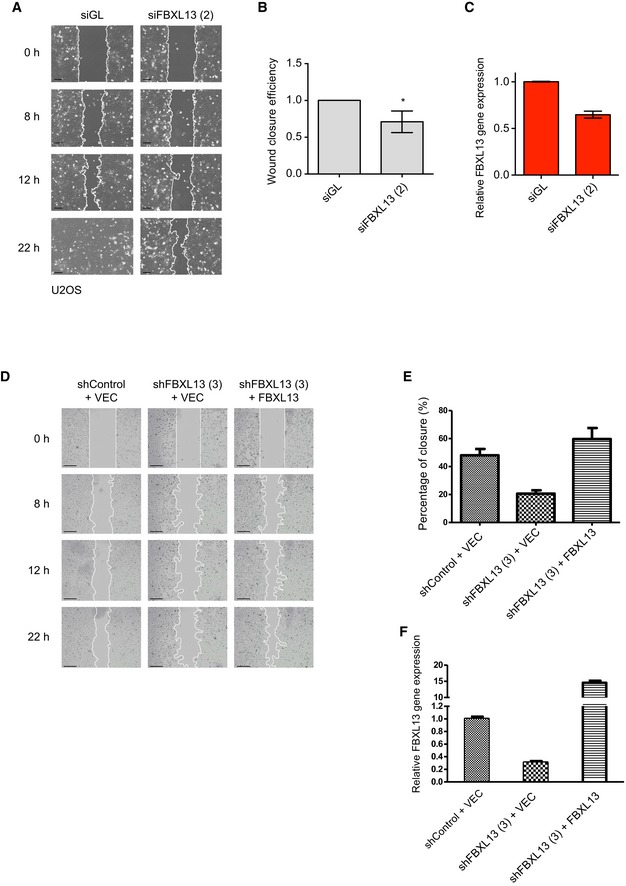Representative images from a wound healing assay of U2OS cells transfected with a control siRNA (siGL) or an siRNA targeting FBXL13 (2). The wound edge is shown in white. Scale bar, 100 μm.
Quantification of wound closure efficiency shown in (A) as calculated by the percentage of wound area closed (mean ± SD from three independent experiments, n > 4 wounds per condition, *P ≤ 0.05). The statistical method used was a one‐sample, unpaired Student's t‐test with a hypothetical means of 1.0.
Validation of FBXL13 mRNA level in the samples shown in (A) using quantitative real‐time PCR (qPCR; mean ± SD from three qPCR triplicates).
Representative images from a wound healing assay of U2OS cells stably overexpressing pBabe FBXL13 or an empty vector control (VEC). Cells were transduced with either a lentiviral vector containing an shRNA targeting FBXL13 or a control shRNA. The wound edge is shown in white. Scale bar, 250 μm.
Quantification of wound closure efficiency in (D) (mean ± SD from three independent experiments, n > 4 wounds per condition).
Validation of FBXL13 mRNA level in the samples shown in (D) using quantitative real‐time PCR (qPCR) (mean ± SD from three qPCR triplicates).

